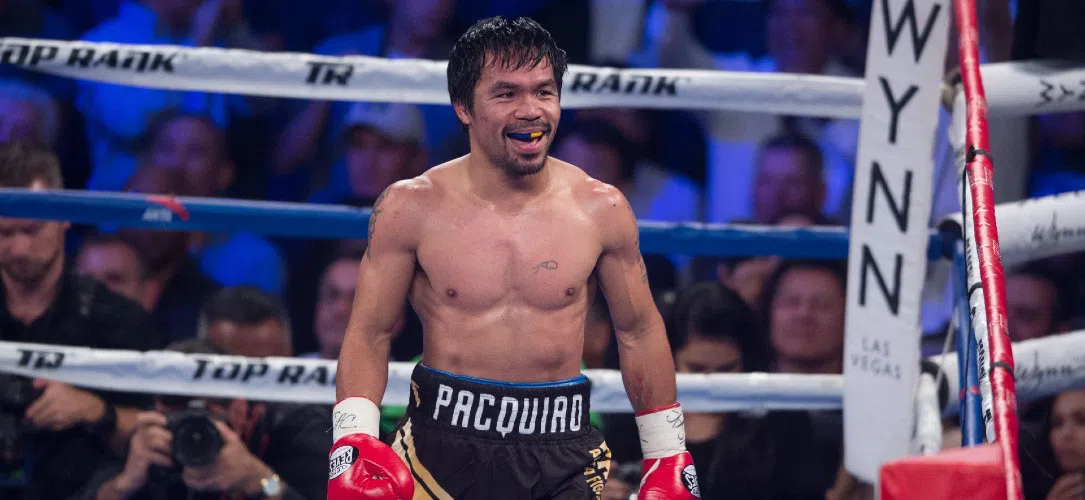From how the the company started to how scoring works, our guide explains everything you need to know about the UFC.
What is the UFC?
The Ultimate Fighting Championship (UFC) is a mixed martial arts promotion company.
With a roster that includes many of the world’s best male and female MMA fighters, the UFC is considered the sport’s biggest and best organisation.
How did the UFC start?
The UFC was founded in 1993 by co-founders Art Davie, Bob Meyrowitz, Campbell McLaren, David Isaacs, John Milius and Rorion Gracie.
In the early 1990s, Davie proposed to Milius – a film director and screenwriter – and Gracie – a Brazilian Jiu-Jitsu grand master – an eight-man tournament pitting fighters from several different disciplines against each other.
Davie secured 28 investors to start a new company named WOW Promotions.
WOW Promotions partnered with Semaphore Entertainment Group (SEG) to televise the tournament, which would be named The Ultimate Fighting Championship.
Film and art director Jason Cusson designed the eight-sided cage known as the Octagon, which would be used for the inaugural tournament and every UFC event since.
UFC 1, as the first tournament would later come to be known, was held on 12 November 1993. It featured no weight classes and just three rules: no biting, no eye gouging and no groin shots.
Royce Gracie – the younger brother of co-founder Rorion – won the inaugural tournament after winning all three of his matches by submission.
Following the success of UFC 1, the company continued to stage tournaments, with UFC 2 taking place on 11 March 1994 and featuring 16 fighters.
The UFC’s first state-sanctioned event that took place under unified MMA rules was UFC 28, which took place on 17 November 2000.
In January 2001, the UFC was purchased by brothers Frank and Lorenzo Fertitta. They set up Zuffa, LLC to control the UFC and installed their business partner, Dana White, as the company’s president.
The UFC went from strength to strength and Zuffa was purchased by William Morris Endeavor (WME-IMG) for $4.025bn in October 2016.

Check out our UFC predictions and tips.
How does the UFC work?
The UFC holds a major event approximately once every month. These events are numbered in ascending order. UFC 250 took place on 6 June 2020.
Each event typically includes 11 or 12 fights. There are usually two or three early-preliminary fights, four preliminary fights and then five fights on the main card.
The main card almost always finishes with a fight for a UFC title.
Along with these major events, the UFC holds minor events every one or two weeks, known as UFC Fight Nights. These usually include more than 10 fights but rarely a title bout.
Fighters in the UFC almost exclusively face opponents in the same weight class, also known as divisions.
The UFC is comprised of 12 divisions – eight men’s and four women’s.
To fight in a division, a fighter must weigh at or below the upper weight limit on the day before the fight.
The UFC divisions and weight limits are as follows:
MEN’S
Heavyweight – 265lb
Light heavyweight – 205lb
Middleweight – 185lb
Welterweight – 170lb
Lightweight – 155lb
Featherweight – 145lb
Bantamweight – 135lb
Flyweight – 125lb
WOMEN’S
Featherweight – 145lb
Bantamweight – 135lb
Flyweight – 125lb
Strawweight – 115lb
Each division has a ranking of the top 15 fighters and, at the top, a champion who holds the UFC title. Fighters compete against each other to climb the rankings and earn a shot at the title.
How do UFC rankings work?
Every division in the UFC has a ranking of active fighters from 1-15. These rankings exclude undisputed and interim champions.
The No. 1 ranked fighter is usually considered next in line to face the champion in their weight class. Sometimes, however, the No. 1 fighter may be passed over for another contender based on circumstances like injuries or travel issues.
A fighter can be ranked in more than one weight class, providing they have fought in that division.
Fighters move up and down the rankings based on their results in the Octagon. If a fighter beats an opponent ranked above them, they will climb the rankings. Lose to a lower-ranked or unranked opponent and they will fall, or even drop off the rankings altogether.
This is not an exact science, though. The rankings are decided by votes from a committee of media members and have therefore been a source of controversy for both fighters and fans for years.
The UFC also has pound-for-pound rankings, which include the best of the best from all the company’s weight classes. These are also decided by the rankings committee.

How is a UFC fight decided?
A UFC fight is comprised of three five-minute rounds. A championship fight, however, is stretched to five rounds.
There are 10 ways a UFC fight can end:
Decision – When the allotted time runs out, the fight is decided by the judges’ scorecards.
Knockout – A fighter is unable to continue due to strikes.
Technical knockout – The referee stops the bout because a fighter is no longer able to defend themselves from strikes or is taking excessive damage.
Submission – A fighter admits defeat by tapping their opponent’s body or the mat, or by tapping verbally.
Technical submission – The referee stops the bout because a fighter is in danger of injury from a submission, either because they have broken a bone or have been choked unconscious.
Doctor stoppage – The doctor decides it is unsafe for a fighter to continue, usually because of a cut.
Retirement – A fighter decides they can no longer continue, usually between rounds.
Disqualification – If a fighter is warned but continues to break the rules, or uses an illegal strike that prevents their opponent from continuing, they will be disqualified.
No contest – If a fighter cannot continue due to an accidental illegal strike early in the fight, the bout will be ruled a no contest.
Technical decision – If a fighter cannot continue due to an accidental illegal strike in the third round of a three-round fight or the fourth or fifth round of a five-round fight, the decision goes to which fighter is ahead on the judges’ scorecard at that time.
How does UFC scoring work?
Every UFC fight is scored by three judges using the 10-point must system.
Fighters are given a score at the end of each round. The winner of the round must receive 10 points, while the loser receives nine.
On some occasions, the judges may score the round as a draw where both fighters receive 10 points, though this is relatively rare.
If a fighter is judged to have been thoroughly dominated for the entire round, they may only receive eight points.
Four criteria are used by judges to decide who wins the round. These include:
Effective striking – How many legal blows a fighter lands on their opponent. Strikes that contribute to the immediate end of the match – such as power shots and knockdowns – are worth more than those that deal cumulative damage.
Effective grappling – How successfully a fighter uses wrestling and grappling to attack, including takedowns. Takedowns should only be judged as successful is a fighter uses them to establish an attack. Fighters are not judged upon whether they are on the top or the bottom while grappling, but by how they use those positions to attack.
Effective aggressiveness – How aggressively a fighter attempts to finish the fight. This and the following criteria should only be used if the judges score the previous two completely equally.
Fighting area control – How successfully a fighter dictates the pace of the match and their position in the Octagon. This should rarely be assessed as the previous criteria take priority.
If a fight goes the distance, the scores from each round are added together to decide a winner.
What UFC fighter has the most knockouts?
Vitor Belfort holds the record for the most knockouts in UFC history, with 12. Behind him with 11 are Anderson Silva, Anthony Johnson, Thiago Santos and Matt Brown.
Charles Oliveira and Donald Cerrone are tied for the most finishes with 16.
Cerrone also holds the title for the most wins, with 23.
Visit Betway’s UFC betting page.























